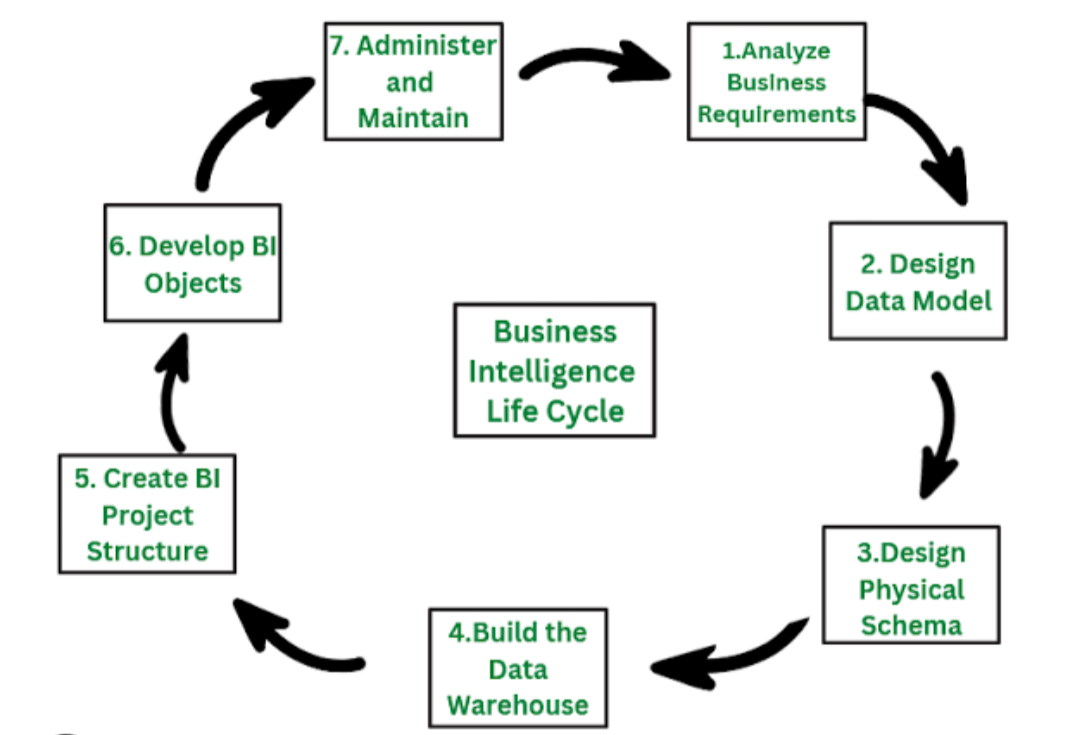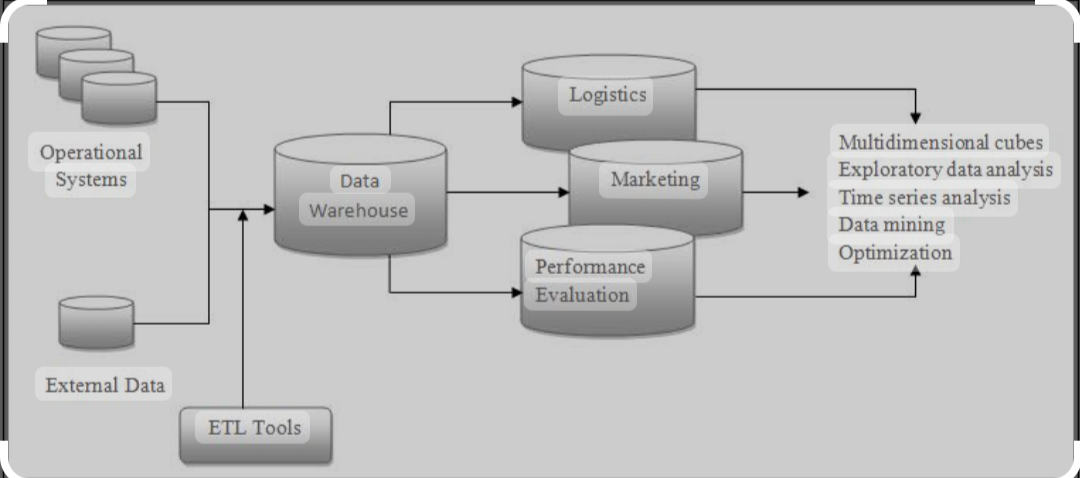what is cycle of business intelligence
What is bi cycle
These four stages are the “business intelligence cycle.” It starts with defining objectives, proceeds to gathering and organizing information, analyzing it, and setting parameters for measuring and monitoring business performance going forward.
The effective use of BI begins with an awareness that BI is fundamentally different from reporting and has strategic implications if it is used to its full potential.
At the outset of a BI project (and on a periodic basis thereafter), business leaders should define the playing field in which they mean to operate. In many organizations, the initial focus for BI is on understanding the company’s existing customers, especially with respect to their buying behavior. Others may choose to zero in on sales performanc
Phase 2: Gathering and Organizing Data
Whatever your company’s top priorities may be, it’s helpful to brainstorm a list of potential questions around those topics. Ultimately, this will shed light on the kind of information you need and what you need to do to consolidate and harmonize that information.
If you’re analyzing customer buying behavior, for example, you may need to aggregate information from your enterprise resource planning (ERP) system (which contains sales order transactions) and combine it with sales pipeline information from your customer relationship management (CRM) system, including sales quotes and deals that never came to fruition.
For many projects, internal data sources are likely to be sufficient. By brainstorming a list of questions in advance, you can begin to determine whether you should include data enrichment as part of your overall BI strategy. If the focus is on knowing your customer, for example, you may want to consider extending your corporate datasets with demographic details available from third-party sources.
Phase 3: Analyzing the Information
Analysis is where the magic happens; it’s where BI distinguishes itself from business reporting in general. Business reporting is more operational in nature than BI. Operational reports often have a short-term focus, and they are used to drive the daily decisions business leaders must make. Business reports may work with real-time transactional data connected directly to the source system.
On the other hand, BI typically has a long-term focus and concerns itself with trends and patterns. BI usually involves, not real-time data, but aggregated or summarized data that may have been loaded into a data warehouse and transformed for analysis. This distinction means that the data used in BI does not necessarily have a direct connection to source systems because it doesn’t need one.
Phase 4: Measuring and Monitoring KPIs
Alongside this ad hoc analysis, you’ll want to leverage your BI systems to measure and monitor the key performance indicators (KPIs) that align to your organization’s strategic objectives. As discussed, business intelligence differs from traditional approaches to financial reporting in its focus. Rather than focusing on short-term operational matters, BI focuses on the data at a higher-level, moving from operational thinking to a more managerial approach. Because it can aggregate high volumes of data from disparate sources, BI is naturally suited for use in tracking both financial and operational KPIs. In other words, BI has the capacity for comprehensive coverage of all areas of interest to business management leaders.



Comments
Post a Comment